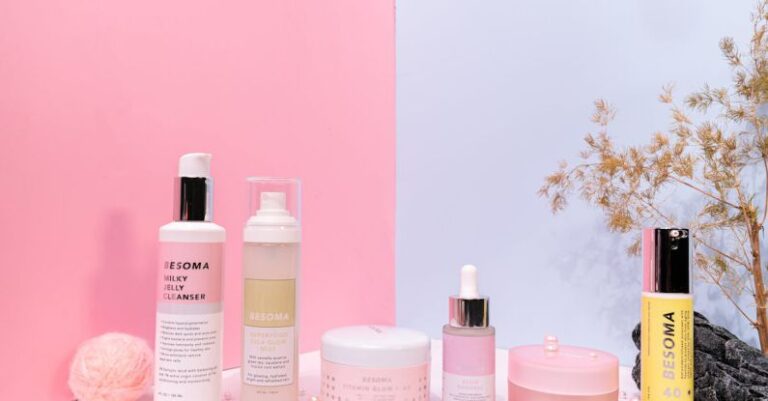
Exfoliating your skin properly is a crucial step in any skincare routine to achieve smooth, radiant, and healthy-looking skin. By removing dead skin cells, exfoliation helps unclog pores, prevent breakouts, and improve the absorption of skincare products. However, many people make mistakes when it comes to exfoliation, which can result in irritation, redness, or even damage to the skin. Here’s how to exfoliate your skin properly to achieve the best results.
Choose the Right Exfoliator for Your Skin Type
The first step to proper exfoliation is choosing the right exfoliator for your skin type. There are two main types of exfoliators: physical exfoliators, which contain gritty particles that physically scrub away dead skin cells, and chemical exfoliators, which use acids like AHAs and BHAs to dissolve dead skin cells. If you have sensitive skin, a gentle chemical exfoliator may be a better option to avoid irritation. On the other hand, if you have oily or acne-prone skin, a physical exfoliator with fine particles can help unclog pores effectively.
Exfoliate Regularly, but Not Too Often
While exfoliation is essential for maintaining healthy skin, it’s crucial not to overdo it. Exfoliating too frequently can strip the skin of its natural oils, leading to dryness, irritation, and even increased sensitivity. Depending on your skin type, exfoliating 1-3 times a week is generally recommended. However, if you have sensitive skin, you may need to exfoliate less frequently to avoid irritation. Pay attention to how your skin reacts after exfoliation and adjust your routine accordingly.
Prep Your Skin Before Exfoliating
Before exfoliating, it’s essential to prepare your skin to ensure the best results. Start by cleansing your skin with a gentle cleanser to remove any makeup, dirt, and impurities. This will allow the exfoliator to work more effectively and prevent irritation. You can also use a warm washcloth or steam your face to open up the pores, making it easier for the exfoliator to unclog them. Avoid exfoliating on dry or sunburned skin, as this can cause further irritation and damage.
Exfoliate Gently and Avoid Harsh Scrubbing
When exfoliating, it’s crucial to be gentle and avoid harsh scrubbing, especially if you have sensitive skin. Use light pressure and circular motions to apply the exfoliator, focusing on areas where dead skin cells tend to accumulate, such as the forehead, nose, and chin. Avoid scrubbing too aggressively, as this can cause micro-tears in the skin and lead to inflammation. If you’re using a physical exfoliator, choose one with fine particles to minimize the risk of irritation.
Rinse Thoroughly and Follow Up with Moisturizer
After exfoliating, rinse your skin thoroughly with lukewarm water to remove any residue from the exfoliator. Pat your skin dry with a clean towel and follow up with a hydrating moisturizer to replenish lost moisture and prevent dryness. This step is crucial, especially if you’re using a chemical exfoliator, as it can be drying to the skin. Choose a moisturizer that suits your skin type and apply it while your skin is still slightly damp to lock in moisture.
Protect Your Skin from the Sun
Exfoliating can make your skin more sensitive to the sun, so it’s essential to protect it with sunscreen, especially if you’re exfoliating during the day. Choose a broad-spectrum sunscreen with an SPF of 30 or higher and apply it generously to all exposed areas of skin. Reapply sunscreen every two hours, or more often if you’re sweating or swimming. Sun protection is crucial to prevent sun damage, premature aging, and skin cancer, so make it a non-negotiable step in your skincare routine.
Incorporate Exfoliation into Your Skincare Routine
To reap the benefits of exfoliation, it’s essential to incorporate it into your skincare routine consistently. Find a schedule that works for your skin type and lifestyle, whether it’s exfoliating 1-3 times a week or less frequently for sensitive skin. Pay attention to how your skin responds to exfoliation and adjust your routine as needed. With proper exfoliation, you can achieve smoother, healthier-looking skin and improve the overall effectiveness of your skincare products.





